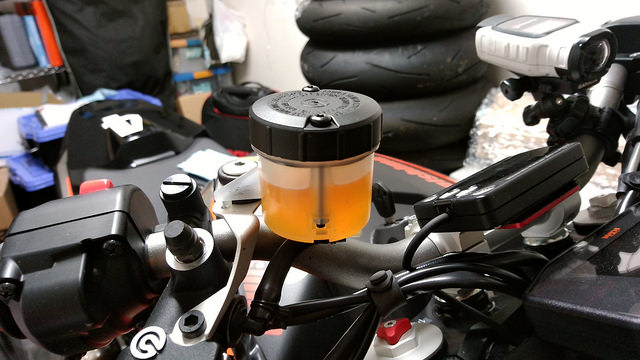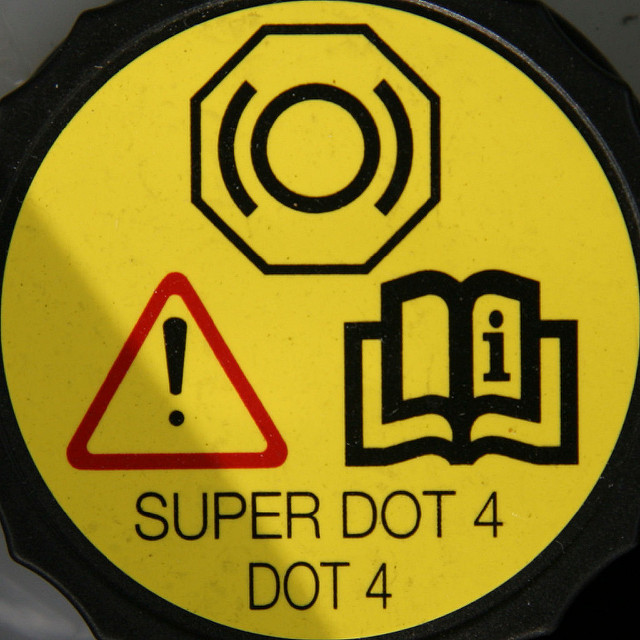Difference Between DOT 3 and DOT 4 Brake Fluids
Brake fluids are the most critical component of your braking system. This is why auto experts recommend changing the brake fluid periodically for smooth running of your vehicles. Brake fluids are undoubtedly the lifeline of your brake system so it’s always recommended to maintain the proper fluid level in the master cylinder as well as to maintain the fluid itself. The master cylinder is the start of the brake hydraulic system which is a cylindrical pump. It gets contaminated over time, which changes the way the brake system operates, eventually affecting the brake pedal and heat dissipation. In addition, the moisture can cause the brake lines to corrode over time affecting other components.
That being said, DOT 3 and DOT 4 are the most common brake fluid classifications assigned by the Department of Transportation (DOT). You can see the DOT number listed on the fluid container. Both DOT 3 and DOT 4 are brake fluids made from a polyglycol base, which is “anhydrous” (contains no water). Glycol based fluids are hygroscopic, meaning they absorb water which is a great advantage for brake fluids as it can absorb moisture that enters the system. Just like a sponge soaks up water, a brake fluid starts to absorb moisture when it is exposed to the air. This prevents the formation of water drops that could boil or freeze. But which one’s better – DOT 3 or DOT 4? May be a head-to-head comparison between the two brake fluids classifications will help you decide better.
What is DOT 3?
DOT 3 is one of the most popular non-silicone-based, fully synthetic brake fluids designed for widespread use in a wide range of brake and clutch applications. DOT 3 is the most commonly specified brake fluid recommended by most vehicle manufacturers. Unlike silicone-based brake fluids, DOT 3 is a polyglycol liquid compound which is hygroscopic, which means it absorbs water. Polyglycol fluids have a short lifespan. As soon as the container of DOT 3 fluid is opened, it must be used completely as it immediately starts to absorb moisture from the air. DOT 3 fluid has a dry boiling point of 401 degrees Fahrenheit and a wet boiling point of 284 degrees Fahrenheit. Some DOT 3 fluid is heavy-duty and has a boiling point as high as DOT 4.
What is DOT 4?
DOT 4 is heavy-duty glycol-based brake fluids found in most brake and clutch systems. It has a higher wet boiling point of 311 degrees Fahrenheit and a dry boiling point of 446 degrees Fahrenheit. This brake fluid specification is sometimes specified for performance vehicles or those subject to high brake temperatures. Basically, the higher the DOT number, the more rigorous the specifications for the fluid, however, import manufacturers are equally divided between DOT 3 and DOT 4. The DOT 4 fluid absorbs less moisture and maintains a higher boiling point than DOT 3 fluid. Like DOT 3, it should be used completely as soon as the container is opened and they must be stored in clean containers in dry, clean locations. It is compatible with DOT 3, but features a higher boiling point.
Difference between DOT 3 and DOT 4 Brake Fluids
-
Boiling Point
– The major point of difference between the two brake fluid classifications is the boiling point – its tenacity to absorb water. While both DOT 3 and DOT 4 are heavy-duty glycol-based brake fluids found in most brake and clutch systems, DOT 4 features a higher boiling point. A DOT 3 fluid has a dry boiling point of 401 degrees Fahrenheit and a wet boiling point of 284 degrees Fahrenheit. A DOT 4 fluid, on the other hand, has a higher wet boiling point of 311 degrees Fahrenheit and a dry boiling point of 446 degrees Fahrenheit. While DOT 4 is compatible with DOT 3, it features a higher boiling point.
-
Viscosity
– While both DOT 3 and DOT 4 are glycol-based fluids, under the rights conditions, DOT 3 is believed to have a longer life than DOT 4. Glycol based fluids are not generic; they are a mixture of many different substances, with up to ten different ingredients blended in the fluid. Viscosity of DOT 4 fluid is more than DOT 3 and it’s capable of maintaining its fluidity at relatively higher temperatures. Viscosity is the measure of fluid’s resistance to flow. DOT 4 fluid shows high tolerance and stability under high temperatures because of its high viscosity.
-
Performance
– DOT 3 fluid has a tenancy to absorb water more readily than DOT 4. So, it’s more likely to boil under heavy braking, which affects the breaking performance. This is why DOT 3 fluids are not recommended for use in aggressively used vehicles, such as racing cars, heavy-duty trucks, and commercial vehicles. Well, under the perfect conditions, DOT 3 is said to have a longer lifespan than DOT 4. However, the addition of the borate in the DOT 4 fluid aids in proper functioning of the entire braking system, improving the overall performance of the vehicle.
DOT 3 vs. DOT 4: Comparison Chart
Summary of DOT 3 vs. DOT 4
While both DOT 3 and DOT 4 are glycol-based fluids, under the rights conditions, DOT 3 is believed to have a longer life than DOT 4. However, DOT 3 fluid has a tenancy to absorb water more readily than DOT 4. So, it’s more likely to boil under heavy braking, which affects the breaking performance. This is why DOT 3 fluids are not recommended for use in aggressively used vehicles. DOT 4 shows high tolerance and stability under high temperatures because of its high viscosity, so it aids in proper functioning of the overall braking system.
- Difference Between Caucus and Primary - June 18, 2024
- Difference Between PPO and POS - May 30, 2024
- Difference Between RFID and NFC - May 28, 2024
Search DifferenceBetween.net :
Leave a Response
References :
[0]Image credit: https://www.flickr.com/photos/kemeko/35307588660
[1]Image credit: https://www.flickr.com/photos/exfordy/408205548
[2]Gilles, Tim. Automotive Chassis: Brakes, Suspension, and Steering. Boston, Massachusetts: Cengage, 2005. Print
[3]Mavrigian, Mike and Larry W. Carley. Brake Systems: OEM & Racing Brake Technology. London: Penguin Books, 1998. Print
[4]Owen, Clifton E. Classroom Manual for Automotive Brake Systems. Boston, Massachusetts: Cengage, 2003. Print



